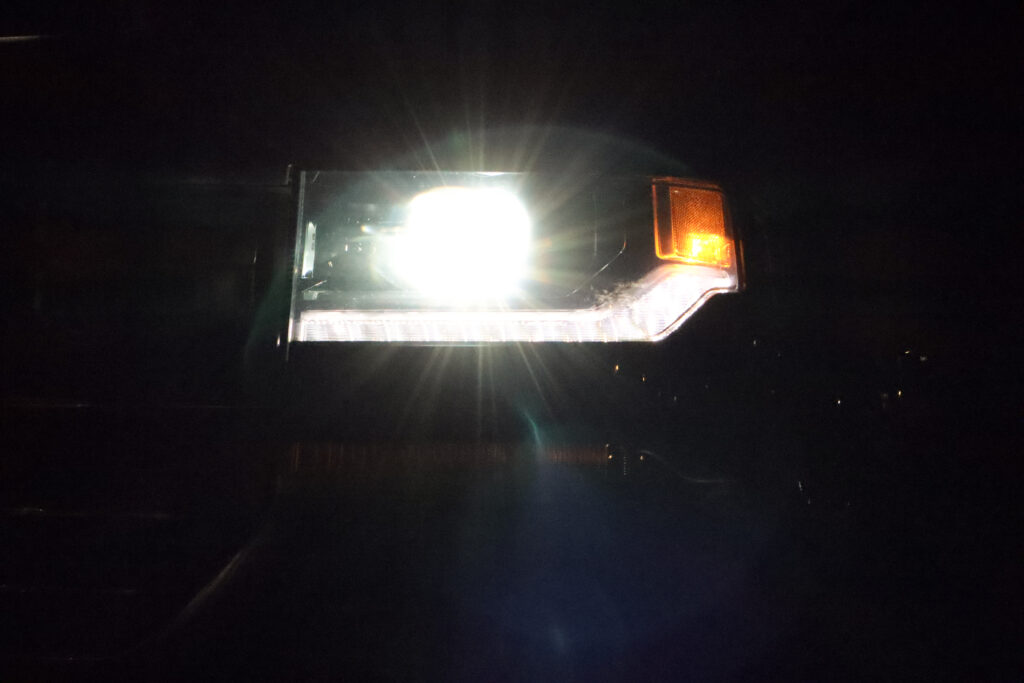Blinded By the Light: The glaring problem with LED headlights

By Stephen Cooney
Picture this:
You’re driving on the highway at night, and everything is fine, until you see a lifted truck driving behind you. Their headlights are too bright, to the point where you can’t see anything out of your rearview mirror. You may be wondering, “Why do they have their high beams on?”
Plot twist- they don’t.
LED headlights have become a major problem in recent years, with many drivers complaining about a bright glare that prevents them from seeing the road in front of them and nearly causing drivers to get into accidents. Users across various social media platforms have been complaining about this issue.
@EnterJRS on X poked fun at this issue, writing, “Whoever invented LED headlights should be blinded by them and publicly stoned.”
So why is it that cars are allowed to have these flashbang grenades for headlights? Well, the answer is simple.
Headlight regulations are handled by the National Highway Transportation Safety Administration (NHTSA), which seems standard, until you look at the regulations themselves. Right off the bat, you notice that the last meaningful revision was in 1970– well before LED headlights were invented. Then you look at the calibration method.
Headlight brightness is calibrated in lumens, a measurement used to measure how light impacts the eye. What makes this a problem is that the eye is more sensitive to the blue-ish hue of LED headlights, while being less sensitive to the amber glow of halogen headlights. So, LED headlights are calibrated to the same number of lumens as halogen headlights but seem far brighter.
Utah State Trooper, Justin Bowen, who works nights keeping the highways safe, agrees.
“Lights just seem to be a lot brighter. It’s really hard to see, actually.”
So, LED headlights don’t just seem brighter, they are brighter than halogen headlights. But why do modern car manufacturers choose LED headlights over their halogen counterparts?
There’s a couple of reasons:
For one, LED headlights look much sleeker than halogen headlights. LED headlights also don’t take any time to heat up, so they hit their maximum brightness much faster. They also don’t burn out as fast, lasting 50,000 hours on average, with halogen lasting only 500-1,000 hours.
So, there are benefits of LED headlights, but that doesn’t change the fact that the glare they create makes driving at night a dangerous and daunting task.
To work towards a solution, let’s look at European automotive manufacturers.
Most cars in Europe have adaptive headlight technology, where the headlights are programmed to shift direction to create less of a glare while maximizing visibility for the driver. But why isn’t this the standard in the US, even though the technology was made legal in 2022?
Well, the NHTSA seems to be adamant that their regulations are fine and have no need for change.
“NHTSA carefully considered the existing [European] regulation during the rule-making process,” the agency said. “In areas where that regulation lacked objective and measurable performance criteria required for the self-certification system in the United States, the agency adopted performance requirements to ensure safety for all road users.”
Automakers were eager to offer this technology to consumers, with Audi including is in their vehicles since 2014, but leaving them deactivated until they can be fully street legal.
So, what can consumers do to remedy this issue?
A bright idea would be to write to your representative, or even directly contact the NHTSA.





